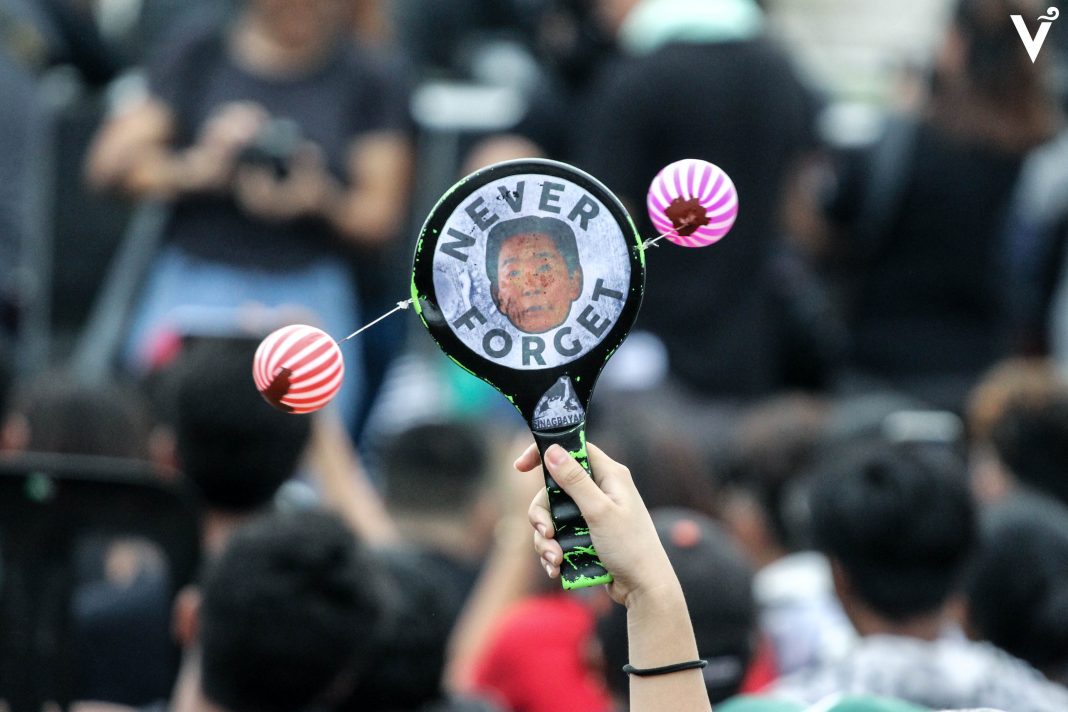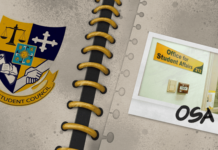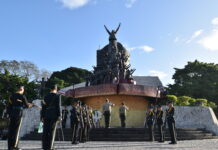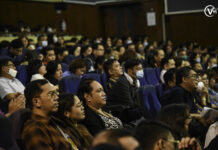HUMAN RIGHTS advocates lamented students’ lack of knowledge on the horrors of Martial Law and urged universities to take steps by teaching it.
Hilda Narciso, a political prisoner during the Marcos regime, slammed the “empty” content of the Martial Law years in history books in elementary and high school, and the lack of detail in lessons delivered by teachers.
“Dapat lang [ituro ang Martial law]… Dapat lang talaga na maging conscious ang mga teachers na ipasok nila ang details…Anong ipapasok nila kung sila mismong [teachers] hindi nila alam?” Narciso said.
In a 2007 study, Narciso said only general figures from the Martial Law era were written on the back pages of textbooks. Specific events such as human rights violations were not mentioned, she said.
She urged teachers to do their own research and not rely solely on textbooks.
“Pumunta kayo sa Bantayog ng mga Bayani (Quezon City) maraming documents ‘dun, pumunta kayo sa Commission on Human Rights, sa internet marami kayong makukuha, maraming libro,” Narciso said.
Narciso also said UST should posthumously commemorate Thomasian victims of human rights violations under the Martial Law era.
“[Thomasian Martial law victims] are very humane people coming from your school, dapat sila lagyan ng marker at ibigay ang kwento nila … do something about it, where students could come and do their own personal research about them,” Narciso said.
Narciso was among the speakers in UST Simbahayan’s forum at the TARC Auditorium last Sept. 20. The forum, titled “Talakayang Martial Law,” was in line with human rights week, which had the theme: “Francisco De Vitoria: Linggo ng Karapatang Pantao.”
‘A possibility in UST’
Earlier in September, the University of the Philippines-Diliman announced it would offer a general education elective on the culture, literature and language of the Martial Law years.
Professors Archie Resos and Dennis Coronacion, heads of the University’s history and political science departments, respectively, said it was possible for UST to offer the same course.
“Students in UST should be given enough awareness of Martial Law’s comprehensive impact in the various facets of Filipino lives, especially in the political, economic and social aspects,” Resos told the Varsitarian.
“Students fail to consider that martial law is written in the constitution to [protect the people], and not to propagate abuse,” he said.
Resos said that without checks and balances, martial law could be used for personal ambition.
“Martial law’s purpose [is altered] if it is utilized for personal ambition to extend political power, or even hold such power in perpetuity,” Resos said.
In 1972, President Ferdinand Marcos inked Proclamation 1081, which placed the country under Martial Law. Marcos shut down Congress and mass media, and changed the 1935 Constitution to extend his rule beyond his two-term limit.
In a 2008 interview with the Varsitarian, Reynaldo Lopez, a student leader in the Faculty of Arts and Letters during Martial Law, recalled that many Thomasian student activists worked underground and staged rallies against the Marcos regime.
A number of University organizations took part in protests, including Artistang Artlets, Pax Romana and the AB student council. State forces were deployed within the University campus to strain activism.
When ex-senator Ninoy Aquino was assassinated in August 1983, UST Rector Fr. Fredrick Fermin, O.P. attended his funeral. Santo Domingo Church in Quezon City, mother church of the Filipino Dominicans, was used for Aquino’s wake and funeral Mass.
‘Way of teaching’
Resos warned that Martial Law under Marcos should be taught with caution.
“Allow the students to see the purpose of Martial Law in the 1935 Constitution and provide them with primary sources so that they can critically assess the positive and negative consequences of Marcos Martial Law era,” he said.
Jerbert Briola, deputy executive director of the Task Force Detainees of the Philippines, likewise said schools should be cautious and critical in teaching Martial Law. He warned that the subject could be used as a tool for historical revisionism and rehabilitate the images of Marcos and other perpetrators of abuses and corruption.
“We should take into consideration ‘yung content, baka ang ituro nito ay revisionism, baka ang ituro ay glorifying Marcos as a hero…We need careful evaluation kung paano siya ituturo,” Briola said during the Simbahayan forum.
Coronacion said the professors’ views of Marcos and the Martial Law years would be crucial in shaping the students’ attitudes toward the subject.
“[Teaching Martial Law] shapes the minds of students...Ang nadidinig kong opinyon ng mga estudyante, kung ano `yung sinabi ng mga professor nila ‘yun na rin ang nagiging stand nila,” he said.
Since Marcos, two presidents have declared martial law. In 2009, President Gloria Arroyo imposed martial law in Maguindanao and suspended the writ of habeas corpus following the Maguindanao massacre.
In 2017, President Rodrigo Duterte proclaimed martial law in Mindanao and suspended the writ of habeas corpus following the terrorist attack on Marawi City.


















